Three Position Signals
DWARF SIGNALS
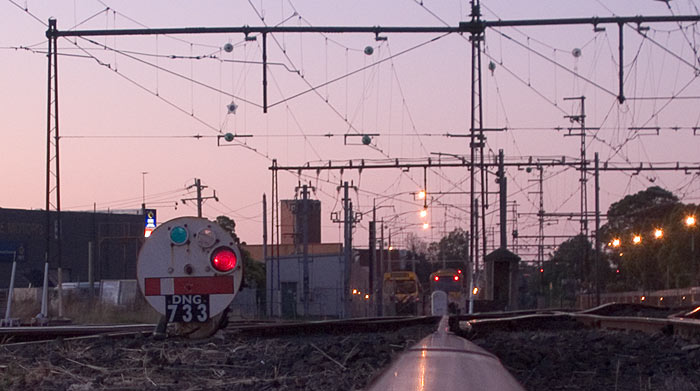
Dandenong Jan. 2005
|
Like 2 position dwarfs, 3 position dwarfs are used to control movements from a siding to a mainline or from mainline to a siding or from a mainline to mainline. Because light 2 and 3 position dwarfs look identical, confusion arises when a green is displayed. A green on a 2 position dwarf can be displayed when the track is occupied, a green on a 3 position dwarf informs the driver that the track is clear. It is of the utmost importance that a driver know if he is looking at a 2 or 3 position dwarf signal, this information only comes from a signal diagram and local route knowledge. Purple was used in many dwarfs to avoid the red light in a dwarf being confused with a red hand signal in shunting yards. In later years red became the normal colour used for the stop indication until the 1990's when for reasons that are not clear, purple was again used. Interestingly when signals were displayed with LED's the"purple" light looks like a blue light. |
***Drawing of 3 position dwarf ***
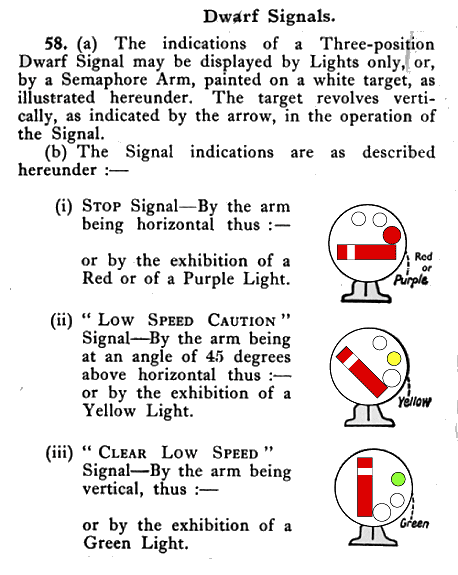
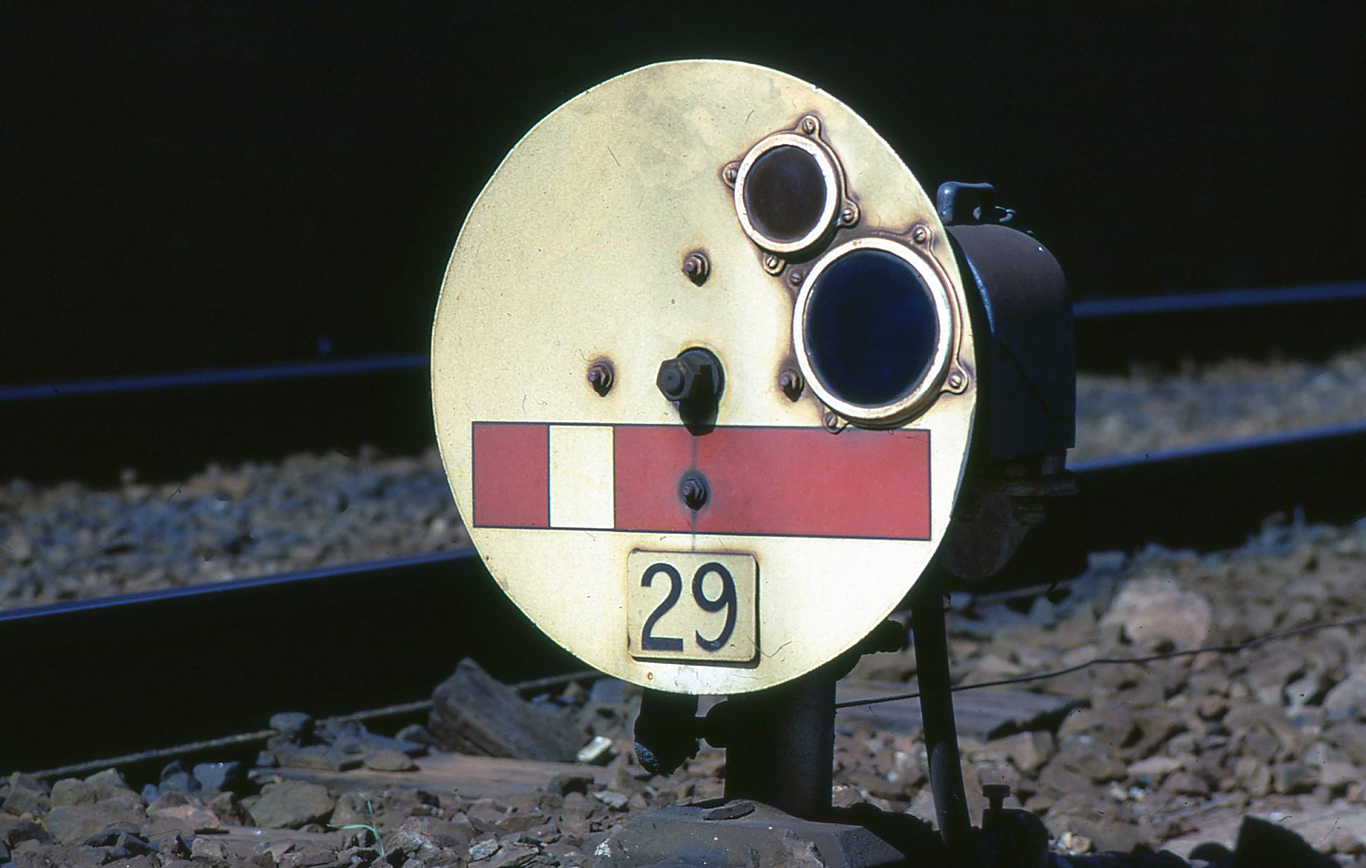
ABOVE & BELOW: Post 29 at Ringwood controlled movements from the middle road in an up direction. Nov 1973. This dwarf was a departure signal so it is curious that it could not show a "clear low speed" indication.(photos courtesy Doug Miles)
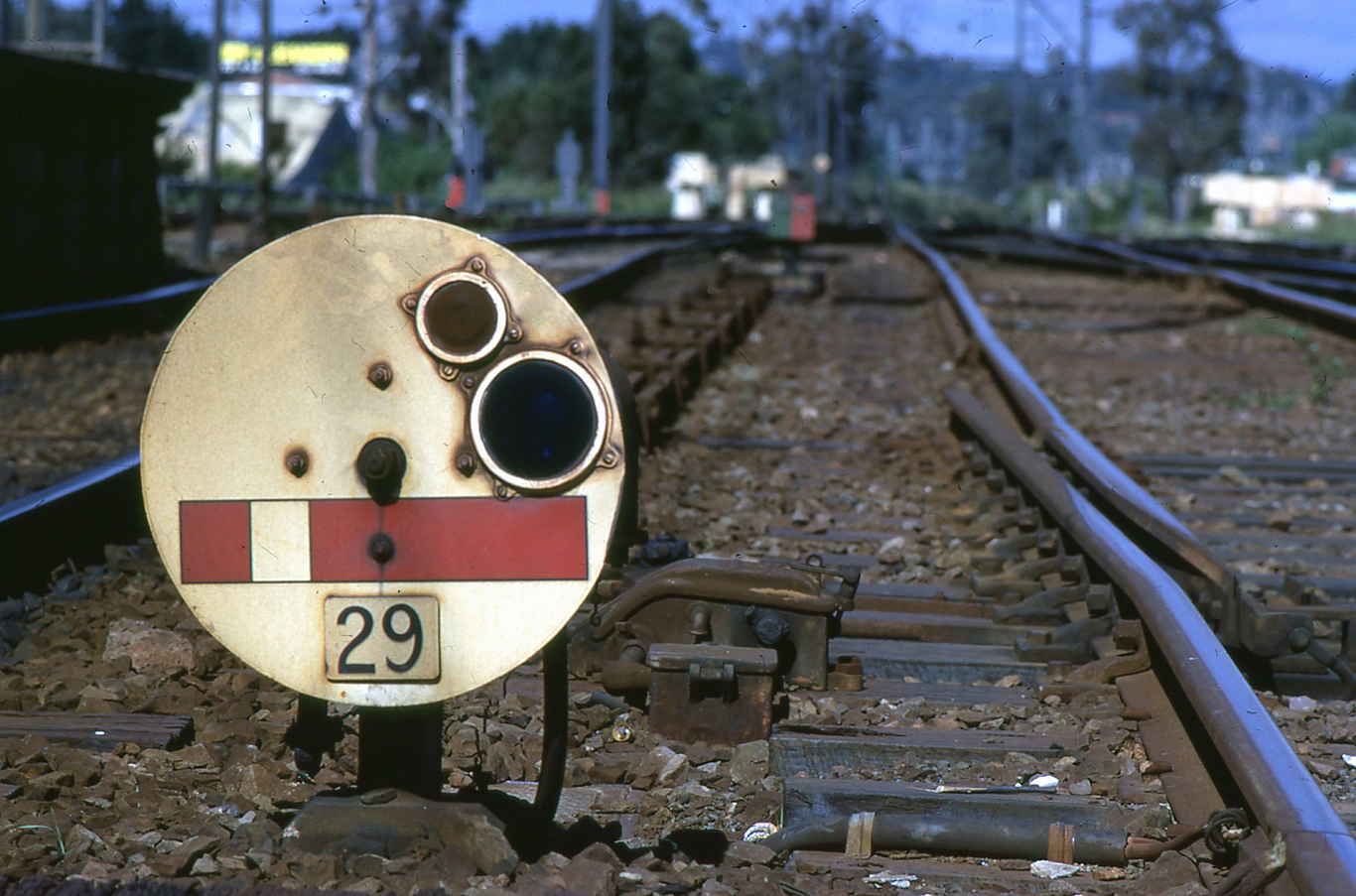
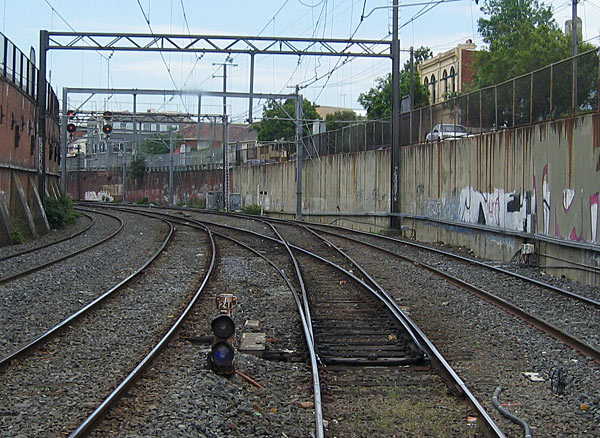
| The vast majority of 3 position dwarfs are light signals like this one shown at Camberwell, it controls movements from the siding, where the Alamein shuttle sits in between runs, onto the mainline. |

|
Kensington 2005
It is important not to get confused between a 3 position dwarf and how many aspects it can show. Although this dwarf is a 3 position dwarf it can only show 2 aspects, yellow "low speed caution" and red "stop" |
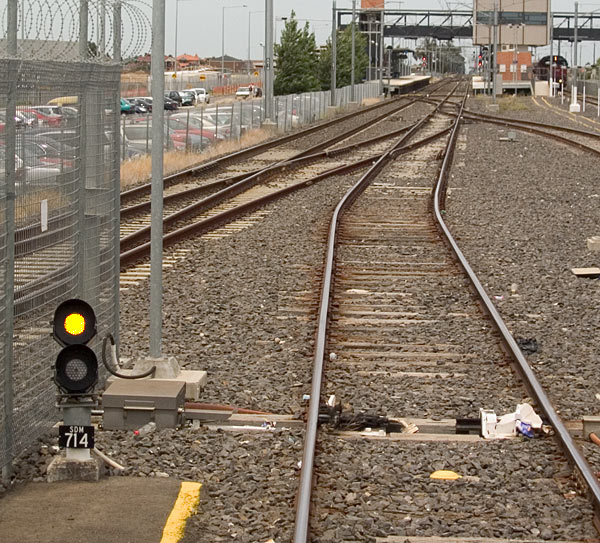
|
Sydenham, Dec. 2005
Another 3 position dwarf than can only show 2 aspects, this dwarf, shown at "low speed caution" controls movements out of the suburban stabling siding onto the mainline, (either platform) it works in conjunction with the derail |
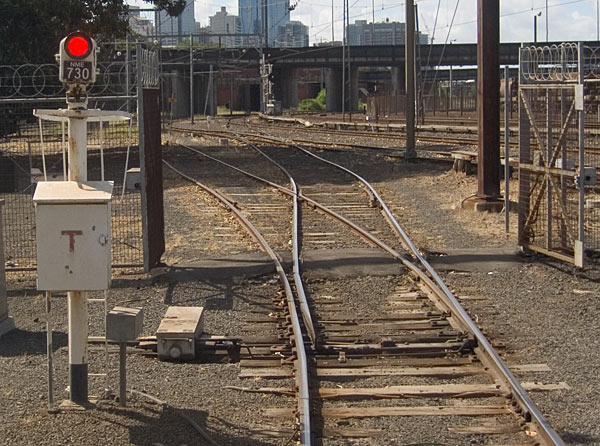
|
North Melbourne stabling siding, Dec. 2005
This 3 position dwarf controls movements out of the siding onto the mainline. This is a searchlight type signal, with these signals the red changes to a yellow instead of other light dwarfs on this page that use 2 separate lights. |
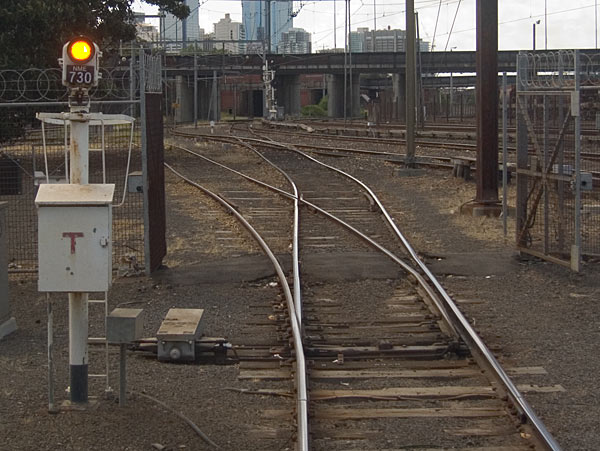
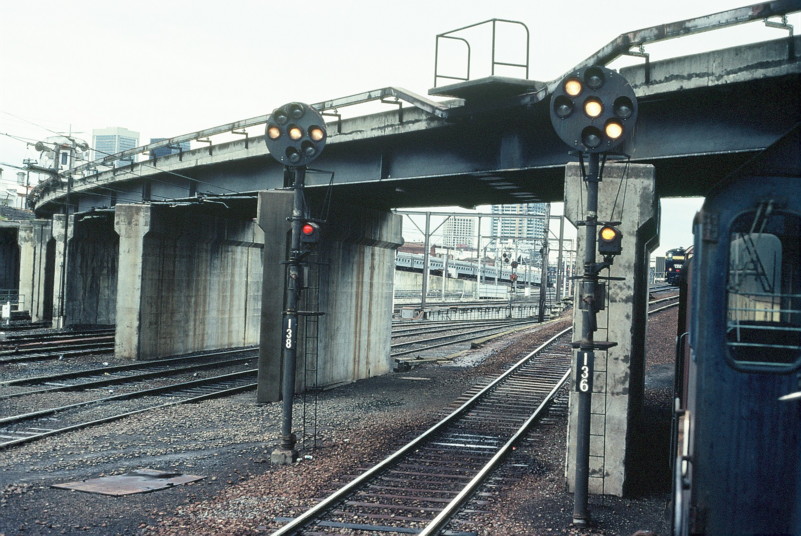
|
These dwarfs were for movements onto the hump. The round "signals" with 7 white lights were unique hump signals that acted like hand signals from the hump operator. When the lights were horizontal it indicated "stop" when the lights were vertical it indicated to approach the hump at normal shunting speed (max 10 mph) when the lights were at 45 degrees, as shown in the photo, it indicated to the crew to go to humping speed (1.5 MPH) When the horizontal lights flashed it mean "back up" These lights were duplicated in the cab of the H class locos
Photo courtesy Colin McKee |
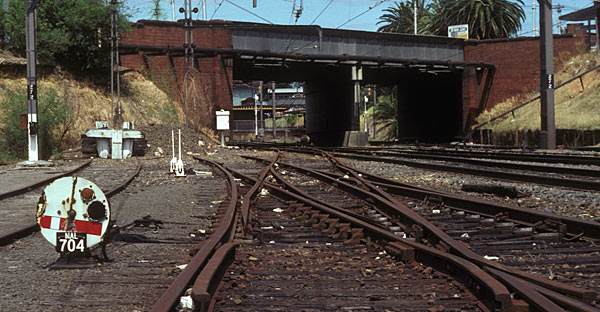
|
Malvern, Feb. 1982
Another 3 position dwarf that could only show 2 aspects. This dwarf controlled movements from the Malvern goods yard onto the down Caulfield local line. |
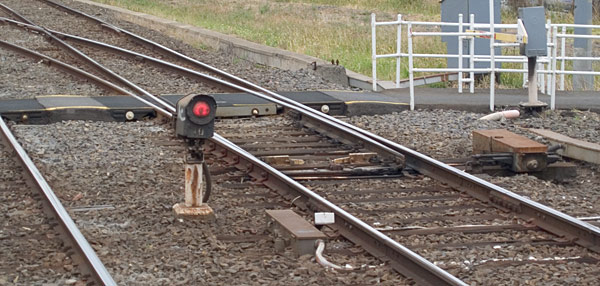
|
Westall, Jan. 2006
Very few dwarfs are equipped with a train stop but this one that takes you from the up line to the down line at Westall has one, probably to protect against the possibility of a wrong line move. |
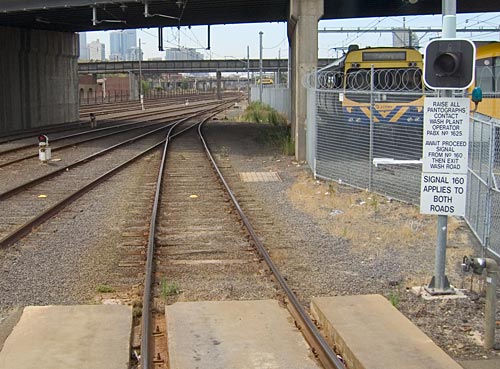
|
Nth Melb wash plant, Jan. 2006
Most dwarfs apply only from one track, but the dwarf on the left applies out of the 2 tracks shown here, a sign reminds drivers of this. The traffic light type signal on the right is for the wash plant operator to communicate with the driver. |
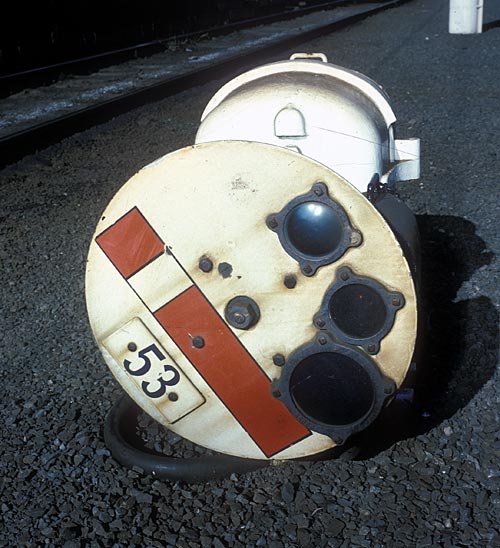
A 3 position semaphore dwarf showing "low speed caution"
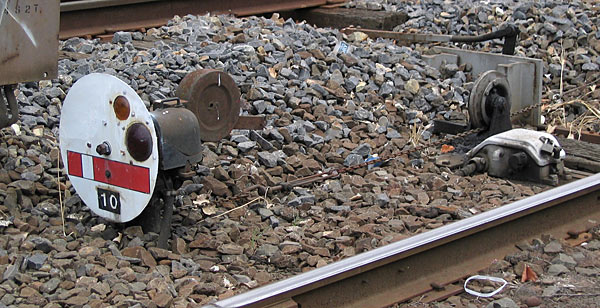
Close up of the dwarf at Kensignton showing the wire operation. Wire operated 3 position dwarfs were extremely rare.
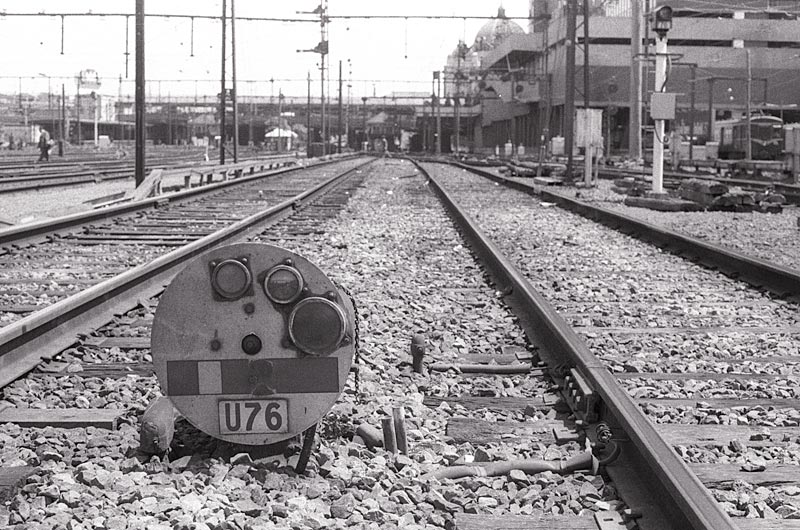
U 76 at Flinders St, 1978
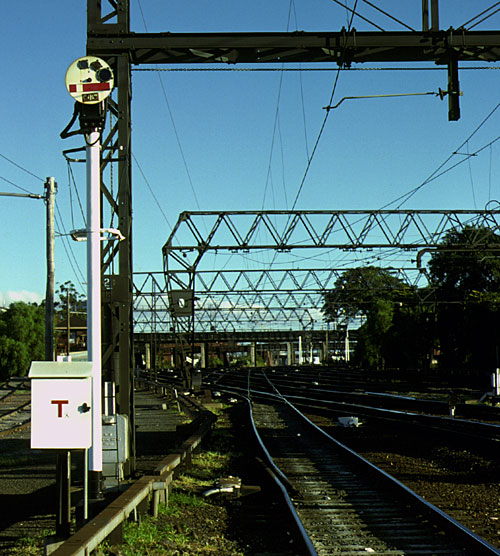
| Most dwarfs were very short, hence the name, but some were erected up high to improve sighting. This dwarf, U2, applied out of the through siding at Arden Street, near Nth Melbourne, onto the mainlines. A diagram can be seen here. Photo date, 1980 |
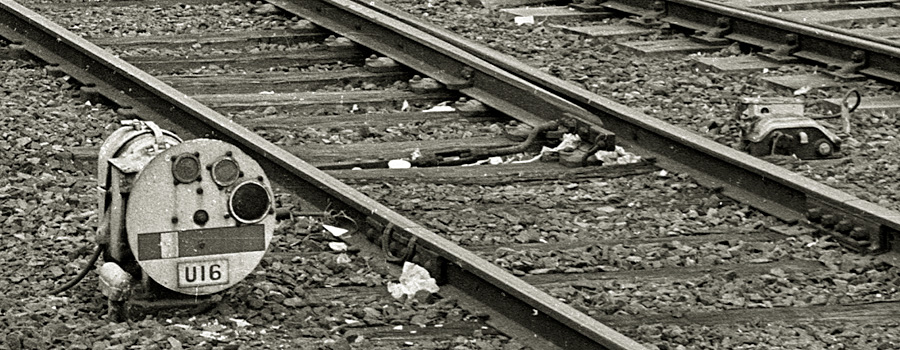
U 16 at Sandringham, 1985.
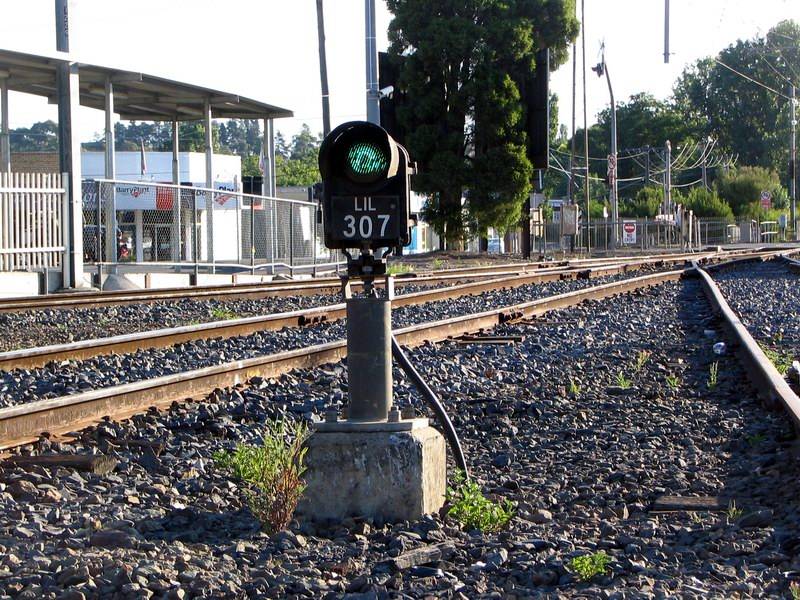
|
Lilydale, Jan. 2007. If the automatic up the hill is at proceed, this dwarf which is a departure signal, can show green. |